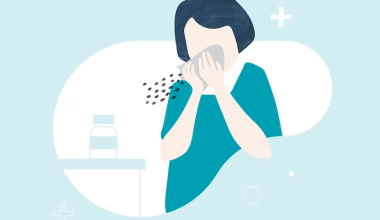Introduction: What is Cut on Gums?
Our comprehensive guide on understanding the causes and treatment options for cuts on gums! We know that dealing with any oral discomfort can be a real pain, but don’t worry, we’re here to help. Whether you’ve experienced this yourself or are simply curious about the topic, you’ve come to the right place. Cutting on gums is a common dental issue that many people encounter at some point in their lives. It can range from a minor annoyance to a more serious problem requiring medical attention. In this blog post, we will delve into the various causes of cut on gums, discuss their symptoms, explore how it is diagnosed and treated, provide effective home remedies, and offer prevention tips to keep those pesky cuts at bay.
Common Causes of Cut on Gums
Accidents happen, and sometimes they result in cuts on your gums. While it may seem like a minor issue, cutting gums can be quite painful and bothersome. Understanding the common causes of these cuts can help you take preventive measures.
- Brushing too Vigorously: One common cause is brushing too vigorously or using a toothbrush with hard bristles. The forceful motions and rough bristles can irritate and damage the delicate gum tissue, leading to cuts. It’s important to brush gently in circular motions with a soft-bristled toothbrush.
- Eating Sharp or Hard Foods: Another culprit is eating sharp or hard foods that can accidentally nick your gums. Crunching on ice, biting into popcorn kernels, or even accidentally piercing your gum with a utensil while eating can lead to cuts.
- Dentures may Contribute to Cutting Gums: In some cases, dental appliances like braces or dentures may contribute to cutting gums. Ill-fitting appliances that rub against the gum tissue can cause irritation and sores.
- Injury from Accidental Bites During Chewing: Injury from accidental bites during chewing or grinding teeth at night (bruxism) is also a known cause of cut gums.
Symptoms of Cut on Gums
When you have a cut on gums, it can be pretty uncomfortable and even painful. Thankfully, some telltale signs can help you identify if you have a cut on your gums.
- Bleeding: One common symptom is bleeding. If you notice blood when brushing or flossing, it could be due to a cut on your gums. Another symptom is swelling around the affected area. You may also experience tenderness or pain when touching the area where the cut is located.
- Redness or Discoloration of the Gum Tissue: In addition to these symptoms, you might notice redness or discoloration of the gum tissue surrounding the cut. This can indicate inflammation and infection.
- Bad Breath or an Unpleasant Taste: It’s important to mention that cuts on the gums may sometimes lead to bad breath or an unpleasant taste in your mouth due to bacteria entering the wound.
Home Remedies for Cuts on Gums
When you have a cut on your gums, it can be quite uncomfortable and even painful. Fortunately, several home remedies can help alleviate the discomfort and promote healing.
- Rinsing Your Mouth with Warm Saltwater: One of the simplest remedies is rinsing your mouth with warm saltwater. This natural antiseptic solution helps cleanse the wound and reduce inflammation. Mix half a teaspoon of salt in a glass of warm water, swish it around in your mouth for about 30 seconds, and spit it out.
- Applying Aloe Vera Gel to the Affected Area: Another effective remedy is applying aloe vera gel to the affected area. Aloe vera has soothing properties and can speed up the healing process. Simply dab some fresh aloe vera gel onto the cut using a cotton swab or clean finger.
- Applying Clove Oil: Applying clove oil may provide relief if you’re experiencing pain along with the cut on your gums. Clove oil has analgesic properties that can numb the area temporarily. Dip a cotton ball in clove oil and gently press it against the affected gum for a few minutes.
Prevention Tips for Avoiding Cuts on Gums
- Use a Soft-bristled Toothbrush: Choosing the right toothbrush is essential in preventing cuts on your gums. Opt for a soft-bristled brush to avoid any unnecessary abrasion or injury to your delicate gum tissue.
- Practice Proper Brushing Technique: Brush gently in circular motions, angling the bristles towards your gum line. Avoid applying excessive pressure as this can cause cuts and irritation.
- Floss Regularly: Flossing helps remove plaque and food particles between your teeth, reducing the risk of gum inflammation and subsequent cuts. Be gentle when flossing to avoid accidentally cutting into your gums.
- Rinse with an Antiseptic Mouthwash: An antiseptic mouthwash can help kill bacteria and prevent infection, promoting healthier gums and minimizing the chance of developing cuts.
- Avoid Tobacco Products: Smoking or chewing tobacco irritates the gums, making them more susceptible to injury and increasing the chances of developing cuts.
- Eat a Balanced Diet: Proper nutrition is vital in maintaining healthy gums. Include foods rich in vitamins C and D, such as citrus fruits, leafy greens, dairy products, and fish in your diet to promote optimal gum health.
- Schedule Regular Dental Check-ups: Regular visits to your dentist allow for early detection of any potential issues with your oral health before they escalate into larger problems like cuts on gums.
Conclusion
By identifying the common causes of cuts on gums, such as accidental injuries, dental procedures, or gum diseases, you can take appropriate measures to prevent them from occurring. It is crucial to pay attention to any symptoms like bleeding, pain, swelling, or changes in gum color that may indicate a cut on your gums. If you do experience an amount on your gums, seeking professional help from a dentist should be your first step. They will be able to diagnose the severity of the injury and recommend suitable treatment options tailored to your specific situation.








